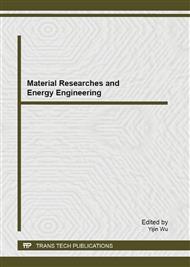p.233
p.239
p.246
p.252
p.258
p.264
p.270
p.275
p.281
Static Stress Distribution in Microvessel Wall with a Layered Model
Abstract:
Based on the vascular membrane stress model and the pseudo-elastic vessel model, the combination constitutive model with a layered structure in microvessel is presented in this paper. By using obtained constitutive equations of the current model, the circumferential stress of the membrane intimal (inner) layer and the three-dimensional stress distribution of the structural outer layer are analyzed. Under the initial blood pressure state, the vascular static stress changes with the inner stiffness increase are also discussed. The results show that with inner stiffness increasing, the stress of outer layer is less affected but the circumferential stress of the intimal layer is increased significantly, which may be one potential risk factor for the vascular injury. These analysis methods and its conclusions have some theoretical significance for studying the problems of arteriosclerosis and other diseases, and preventing the occurrence of related diseases.
Info:
Periodical:
Pages:
258-263
Citation:
Online since:
September 2013
Authors:
Price:
Сopyright:
© 2013 Trans Tech Publications Ltd. All Rights Reserved
Share:
Citation:


